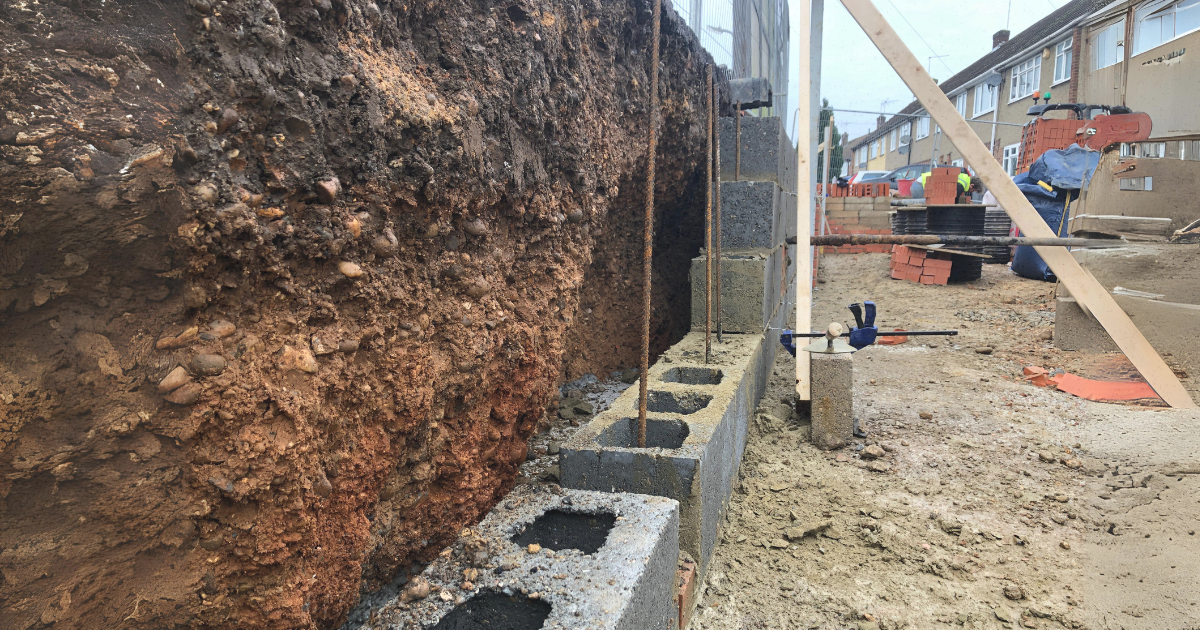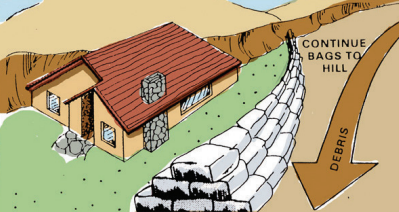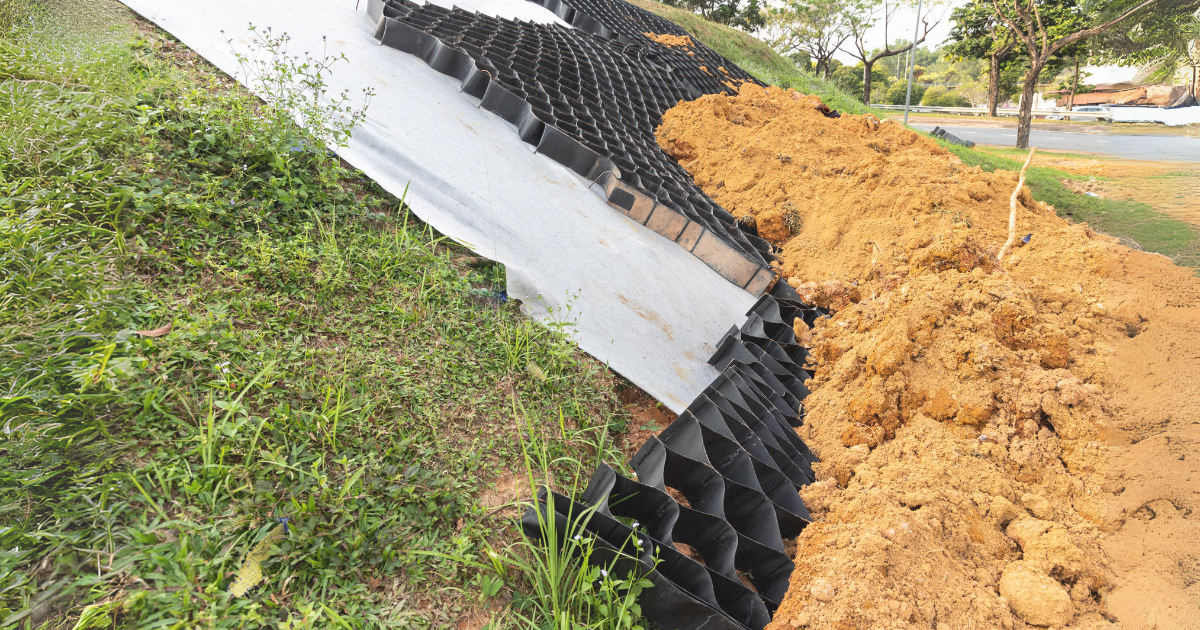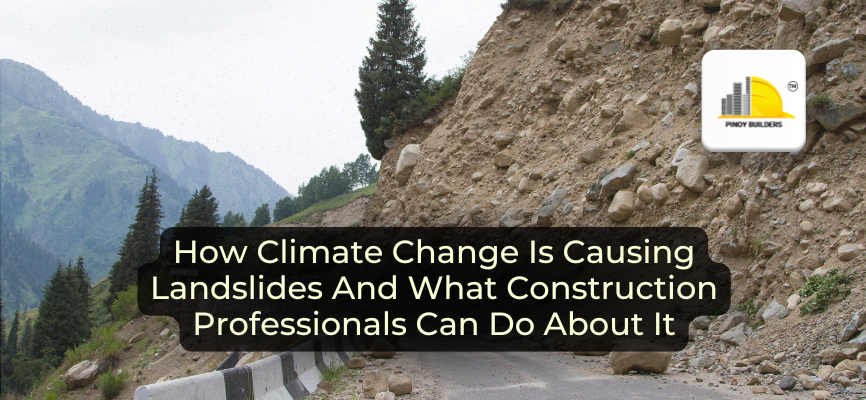With the current international events we are witnessing, it is clear that climate change is no longer a distant threat. Climate change is actively reshaping our environment and lifestyle. One of the most critical areas affected by climate change is the built environment—the cities, towns, and infrastructure that we use, especially the ones that are located next to landslide-prone areas.
As global temperatures rise and weather patterns become more erratic, construction professionals face new challenges, particularly in managing the increasing risks of natural disasters. In this article, let’s explore the impact of climate change on landslide risks and how those in the construction industry can adapt to these evolving conditions.

Climate Change on Weather Patterns
Climate change has drastically altered weather patterns, making them more extreme and less predictable. This shift has led to an uptick in severe weather events, such as heavy rainfall and intense storms, which directly impact construction timelines and safety.
In many regions, these intense weather conditions have become more common, resulting in an increased occurrence of landslides, particularly in areas with unstable or steep terrain. For construction professionals, adapting to these changing conditions is crucial to ensuring the safety and longevity of their projects.
Climate Change Solutions For Construction Professionals
In the construction industry, solutions for climate change mitigation are necessary. However, since these solutions are not a one-time fix, construction professionals continue to look for ways to address the changes that climate change has caused in current construction practices.
Importance of Retaining Walls in Landslide Prevention
Using retaining walls is one of the most effective strategies for preventing landslides in construction areas. These structures are essential for stabilizing slopes and preventing soil from shifting during heavy rainfall or seismic activity. When building retaining walls, it’s important to select durable materials, such as stone, brick, or steel, to ensure the wall can withstand the forces exerted by the soil.
Additionally, incorporating a proper drainage system behind the retaining wall is vital to reduce hydrostatic pressure and increase overall stability, making the structure more effective in landslide prevention.
Creating Debris Pathways to Divert Landslide Flow
Creating debris pathways is another critical strategy in landslide mitigation. The design channels the debris flow away from vulnerable areas, safeguarding both the property and the lives of the residents. Strategic placement of retaining walls can help direct the debris flow, ensuring that any dangerous objects move away from critical infrastructure and into safer zones.

Image from sbcounty.gov
However, careful planning is essential to ensure that these pathways do not inadvertently direct debris toward neighboring properties. Inadequate planning for retaining walls can lead to significant harm to structures, particularly those constructed with materials not designed to endure such severe weather conditions. By thoughtfully designing debris pathways, construction professionals can significantly reduce the impact of landslides on their projects.
Slope Gradient Mitigation Strategies
Mitigating the risk of landslides also involves addressing the slope gradients in construction areas. Before any construction begins, identifying hazardous slopes in the area is essential to reducing the chances of accidents and risk. Clearing access routes and assigning personnel to inspect steep slopes in the area can greatly reduce the likelihood of landslides occurring or casualties in the event of a disaster.

Daily inspections of these steep slopes can also help to improve their condition and increase or maintain stability. Information gathered during these inspections can help construction professionals design better infrastructure that can withstand the slope or the landslide risk in the area.
Facing Climate Change in the Construction Industry
The challenges posed by climate change and the resulting increase in landslides require construction professionals to adopt proactive measures for their projects. By implementing strategies such as building retaining walls, creating debris pathways, and mitigating slope gradients, professionals can enhance the safety and resilience of their construction.
As weather patterns continue to evolve, prioritizing these strategies will be essential to successfully navigating the risks associated with climate change and safeguarding both infrastructure and lives. Construction professionals must remain vigilant and adapt
References
5 Ways Climate Change Impacts Construction That You Need to Know. (n.d.). Best Access Doors. https://www.bestaccessdoors.ca/blog/5-ways-climate-change-impacts-construction-that-you-need-to-know/?srsltid=AfmBOooPsDWReZuPDuzorvk7gjQdpSIudnDzkMSFO7gMPXdMxivswx0X
G3SoilWorks. (n.d.). What is a Landslide? Here are 5 Tips to Prevent It. G3SoilWorks. https://g3soilworks.com/2019/09/17/what-is-a-landslide-here-are-5-tips-to-prevent-it/
INGAA. (2024, March 1). Steep Slope Construction. INGAA. Retrieved August 22, 2024, from https://ingaa.org/wp-content/uploads/2024/03/CS-R-16_Steep-Slope-Construction_rev1.pdf
Resilient Design: Landslides | asla.org. (n.d.). American Society of Landscape Architects. Retrieved August 22, 2024, from https://www.asla.org/landslides.aspx



